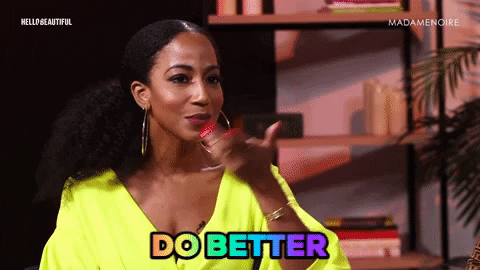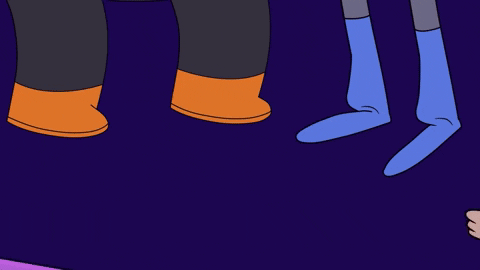Do Better: From A Non-Disabled Person’s Perspective
My hopes are that the following is both a call out and a call in.

I am a non-disabled, white, college-educated, young adult and I’ve had a difficult time vouching for myself in many environments such as in the classroom, workforce, and even day to day moments in life. I am among a majority privileged group who are more readily given a platform from others within the privileged and majority group. As a social work major, I have been taught to use my power to amplify the voices of marginalized people. Today, I want to use this platform to talk about accessibility.
What is a “disability?”
According to the Americans with Disabilities (ADA), a disability is defined as, “A physical or mental impairment that substantially limits one or more of the major life activities.” However, a truly accurate definition of a disability is difficult to produce. There are many variations of what type of disability, or disabilities, a person may experience such as:
- Visual disabilities
- Auditory disabilities
- Cognitive disabilities
- Neurological disabilities
- Physical disabilities
- Speech disabilities
- Sensory disabilities
- Psychological disabilities
There are as many differences between the experiences of each person with a disability as the differences between people who are non-disabled. Every person is different and it’s important to be as inclusive as possible to these differences.

What is the ADA?
The Americans with Disabilities Act (ADA) is a federal civil rights law that was passed by Congress in 1990. Its goal is to provide protections for people with disabilities against discriminatory behavior. It is divided into 5 Titles: I. Employment, II. State and Local Government, III. Public Accommodations, IV. Telecommunications, and V. Miscellaneous Provisions. Each of these titles attempts to ensure that people with disabilities are provided the same opportunities and rights as everyone else. There have been amendments to the ADA to clarify the definition of a disability. Even so, the revisions made over the past 30 years have not been expansive enough to fully include all those who experience a disability.
Though the ADA exists and applies to all entities in the US, many environments believe they do not need to comply with ADA requirements. Some people believe that folks who report ADA violations are purely looking to gain money from a lawsuit. Others believe that it’s too expensive to create accommodations for their facilities. There are many other reasons for this, but ultimately each one is ableist.
For example, rideshare companies such as Uber and Lyft have been known to deny people with disabilities service. This mistreatment of people with disabilities is harmful to say the least.

What is “ableism?”
The Merriam-Webster definition of ableism is “discrimination or prejudice against individuals with disabilities.” However, ableism is more complex than this. Think of it this way:
“Structural ableism assumes that there is an ideal body and mind that is better than all others, and ableists build a world in which this ideal can thrive and others cannot.” –Hanna Thomas & Anna Hirsch
Ableism is a mindset. Non-disabled people have set a norm that there is a right and wrong way to be as a person. The language we use to discuss people with disabilities is often harmful and has been created without folks with disabilities in mind.
Some people are intentional about their ableist actions whereas others do so while unaware. Beyond individual actions, though, are the systemic inequities that do harm at structural levels and trickle down to individuals.
To undo these harmful patterns, it is imperative to be aware and intentional when talking about people with disabilities. Not all people with disabilities have a visible disability nor are they required to disclose their disability status with anyone. In fact, almost 20% of the U.S. population reported having a disability in the 2010 census.
It is imperative for folks to shift their perspective when thinking of giving accommodations to people who are different than them. Rather than viewing differences as a challenge, know that every person has value and should be treated as such.

How is the ADA enforced?
Through lawsuits and settlements. This means that many establishments can get away with not being ADA compliant until someone reports them. Once an individual reports an establishment for an ADA violation, they are first interviewed to determine if the discrimination is evident before any action is taken. Only those who have thorough proof are considered when attempting to get justice.
Additionally, the ADA requirements are not widely taught in architecture school. This furthers the creation of spaces that are not ADA compliant.
There are gaps in our legal and education systems. People with marginalized identities are often left behind. Statistically, there is a high rate of intimate partner violence and sexual violence among people with disabilities. Our services must be welcoming and inclusive to vulnerable communities.
What does all of this mean?
When in a position of power, it’s essential to keep all of this in mind. Advocates must acknowledge the aspects of their identities that are privileged and learn how to properly understand folks who are different from them. You can follow the ADA requirements and still be exclusive. If you are a professional, you hold a position of power and it should be in your best interest to hold an inclusive and accommodating space for all potential patients, clients, students, or whoever you work with.
“A completely accessible group does not exist. The important thing is that groups keep learning and keep thinking about how people might be excluded.” -Liz Kessler
Listen to people with disabilities and be sure that they are a part of the conversation. It’s better to ask someone what they may need from you than for you to make assumptions or ignore them. Your actions do have consequences and the people you work with deserve the most accommodating and inclusive version of yourself.

Resources
If you are considering filing a complaint the following are some resources:
Maryland State Level Complaint Process
Federal Level Complaint Process
Someone’s First-hand Experience Filing
To learn more information as a non-disabled person:
Do These 39 Simple Things to Make Your Student Life Opportunities More Accessible
Increasing Neurodiversity in Disability and Social Justice Advocacy Groups
Microsoft Accessible Events Guide
UMBC Specific Information:
Connect with Student Disability Services
____________________________________________________
Note: This is from an non-disabled person’s perspective. Please reach out to the Women’s Center email with any recommendations or requests for revisions at womenscenter@umbc.edu.
____________________________________________________
Posted: February 20, 2020, 3:00 PM